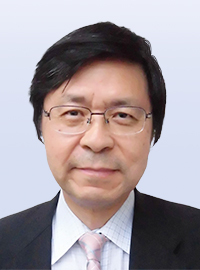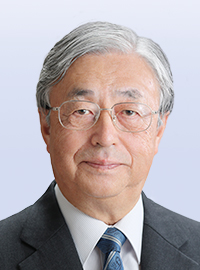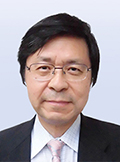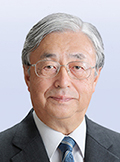Decorations in Autumn, 2023
2023 Autumn Conferment of Japanese Decoration
2023.11.27
The Government of Japan has decided to confer decorations on November 3. Dr. Hiroaki KUMAKURA, former Managing Director of Superconducting Materials Center, NIMS and Dr. Hajime HANEDA, former Director of Electroceramics Group, Advanced Materials Laboratory, NIMS were received the Order of the Sacred Treasure, Gold Rays with Rosette.


The Order of the Sacred Treasure, Gold Rays with Rosette
Dr. Hiroaki KUMAKURA (former Managing Director of Superconducting Materials Center, NIMS)

Dr. Kumakura achieved outstanding performance in the field of superconducting wires. He improved the critical current densities, Jc’s, of the wires through the microstructure control. He also fabricated superconducting magnets and carried out excitation tests.
Development of high performance Bi-based oxide superconducting wires and fabrication of magnets using the wires
Dr. Kumakura applied partial-melting and slow-solidification method for Bi2Sr2CaCu2Ox(Bi-2212) high-Tc superconducting wires, and obtained practical level Jc values of higher than 105A/cm2 in high magnetic field at 25T, 4.2K. These were the highest Jc values ever reported for superconducting wires. Then, he fabricated Bi-2212 coils. He used these coils as insert coils of high field superconducting magnet system, and achieved a word record of magnetic field generated by a superconducting magnet system. This pioneering work stimulated the development of high magnetic field superconducting magnet by using oxide high-Tc superconductors.
Development of high performance MgB2 superconducting wires
Dr. Kumakura demonstrated that some kinds of hydrocarbon doping to powder-in-tube (PIT) processed MgB2 wires are more effective than conventional SiC doping in enhancing Jc values. This discovery triggered many studies of hydrocarbon and carbohydrate doping to MgB2 wires. He optimized the fabrication conditions for internal Mg diffusion (so called IMD) processed MgB2 wires. He attained almost 100% fill factor of superconducting core and, for the first time, obtained practical level Jc value of 2×105A/cm2, at 20K, 4T. He fabricated MgB2 coils using the IMD processed wires and carried out excitation tests of the coils.
Development of high performance Nb3Al superconducting wires
Nb3Al shows higher upper critical field and stronger mechanical properties than commercial Nb3Sn. However, the application of conventional heat treatment for the synthesis of Nb3Al wires brings about grain growth of Nb3Al and this grain growth much decreases Jc values. Dr. Kumakura succeeded in suppression of the grain growth by applying high energy beam irradiations such as laser beam and electron beam irradiations and obtained much higher Jc values than Nb3Sn wires in magnetic fields above 20T. Thus, he demonstrated that Nb3Al is a promising candidate as a conductor of high field magnets.
Dr. Hajime HANEDA (former Director of Electroceramics Group, Advanced Materials Laboratory, NIMS)

Dr.Haneda was involved in the creation of ceramic material processes that were applied to a sustainable environment and contributed to paving the way for new functional materials.
Development of a new synthetic processing for creating new zinc oxide-based functional materials
In order to add new functions to zinc oxide-based materials, which have functions such as varistor properties, phosphors, and photocatalysts, Dr. Haneda developed a new synthesis method and contributed to the creation of new electronic materials that can compete with GaN.
Development of solid oxide synthesis process aimed at creating high-density ceramics
In order to overcome the defects inherent in ceramics, such as reduced translucency caused by pores and other defects, Dr. Haneda developed a new oxide synthesis process to create high-density ceramics free of these defects, and his achievements have led to the development of new applications for ceramics.
Research and development of nonequilibrium inorganic solid materials
Focusing on the development of materials such as chemical sensors and catalysts, Dr. Haneda invented a synthesis method using non-equilibrium processes and succeeded in forming nanoparticle patterns and powders with large specific surface areas, providing important guidelines for the miniaturization of sensors and the creation of new materials such as visible light responsive photocatalysts.
